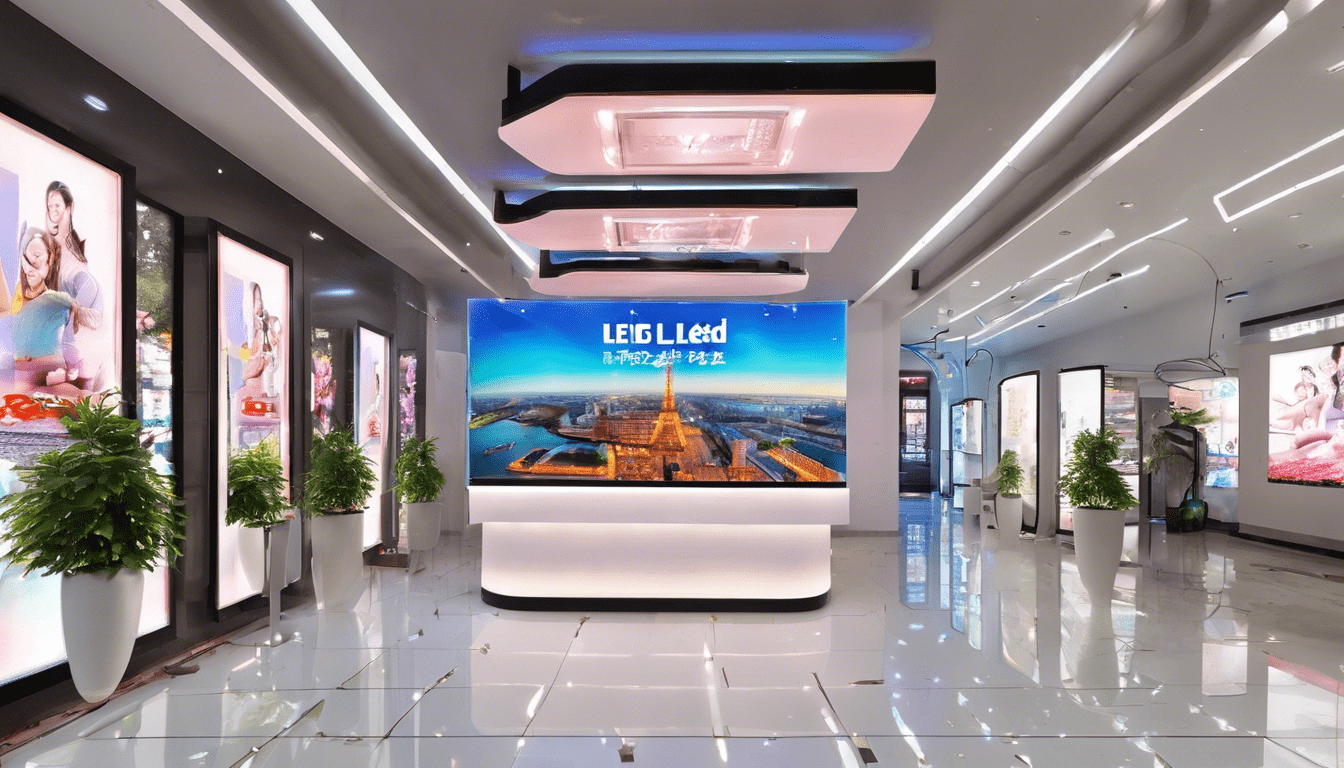The Ultimate Guide to Indoor LED Sign Display Manufacture
Introduction to Indoor LED Sign Displays
Indoor LED sign displays are revolutionizing the way businesses communicate with their customers. With their vibrant visuals and long-lasting durability, these sign displays have become an essential tool in retail, hospitality, transportation, and corporate sectors. Whether it’s for advertising, informational purposes, or decorative use, Indoor LED signs provide the perfect medium.
What is Indoor LED Sign Display Manufacture?
Indoor LED sign display manufacture refers to the process of creating high-quality LED signage for indoor use. This involves a combination of technological innovation, precision engineering, and meticulous assembly. From sourcing high-grade materials to implementing advanced circuitry, this manufacturing process ensures the production of reliable and visually appealing LED signs.
Types of Indoor LED Sign Displays
There are multiple categories of indoor LED sign displays, each suited to different applications and environments:
- Full-Color Displays: Ideal for dynamic advertising with a range of colors.
- Single-Color Displays: Useful for simple messaging and alerts.
- Scrolling Message Boards: Excellent for conveying real-time information and updates.
- Interactive Displays: Touch-enabled displays for enhanced user interaction.
Materials Used in Indoor LED Sign Display Manufacture
High-quality indoor LED signs are produced using several key materials:
- LED Modules: The core component responsible for light emission.
- Aluminum Frames: Provides structural support and durability.
- Acrylic Panels: Offers a clear and polished surface for the LEDs.
- Power Supplies: Ensures consistent electrical flow for optimal performance.
Steps Involved in the Manufacture of Indoor LED Sign Displays
The manufacturing process can be broken down into several crucial steps:
Sourcing Materials
Firstly, manufacturers source high-quality raw materials, including LED modules, power supplies, frames, and protective surfaces.
Design and Prototyping
Designers create detailed plans and prototypes. This stage involves hardware circuit design, software integration, and mechanical structure planning.
Assembly and Testing
Components are meticulously assembled, followed by rigorous testing. This ensures each sign meets the required standards for brightness, color accuracy, and durability.
Quality Assurance
Quality assurance is an ongoing process. Every unit undergoes multiple inspections to ensure it adheres to international quality and safety standards.
Advantages of Indoor LED Sign Displays
Indoor LED sign displays offer a myriad of advantages, making them an increasingly popular choice.
- High Visibility: Provide bright, vibrant displays visible even from a distance.
- Energy Efficiency: Consume significantly less power compared to traditional light sources.
- Durable: Long lifespan with minimal maintenance required.
- Customizable: Capable of displaying a wide range of content formats, including text, images, and videos.
Applications of Indoor LED Sign Displays
Indoor LED sign displays find applications across various industries:
- Retail: Used for promoting sales, displaying new collections, and enhancing customer experience.
- Hospitals and Clinics: For directing patients, displaying waiting times, and providing important health information.
- Transportation Hubs: Crucial in airports, train stations, and bus depots for displaying schedules and alerts.
- Corporate: Used in office lobbies for brand promotion and internal communications.
- Events and Exhibitions: Ideal for presentations, booth information, and real-time updates.
Challenges in Indoor LED Sign Display Manufacture
Despite the benefits, manufacturers face various challenges in producing high-quality LED sign displays:
- Quality Control: Ensuring uniform brightness and color across all LED modules.
- Heat Management: Efficient thermal management to prevent overheating and potential damage.
- Energy Consumption: Balancing high performance with low power usage.
- Cost: Keeping production costs low while maintaining high standards.
Future Trends in Indoor LED Sign Display Manufacture
The industry is continually evolving, with several emerging trends shaping the future:
- Smart Integration: Incorporation of IoT and AI technology for enhanced functionality and user interaction.
- Eco-Friendly Designs: Focus on sustainable materials and energy-efficient solutions.
- Advanced Customization: Increased demand for bespoke designs tailored to specific business needs.
- Flexible Displays: Development of bendable and rollable LED panels for dynamic displays.
Choosing the Right Manufacturer
Selecting the right manufacturer is crucial for acquiring reliable and quality indoor LED sign displays. Here are some tips:
- Check company reviews and customer testimonials.
- Ensure they provide customization options.
- Inquire about warranty and after-sales service.
- Request a portfolio of past projects.
Conclusion
Indoor LED sign displays offer a versatile and dynamic solution for modern communication needs. The manufacturing process is complex and requires expertise, but the result is a powerful tool for advertising, informing, and engaging audiences. As technology advances, these displays will become even more integral to various industries, continually enhancing the way we experience information and visual content.

